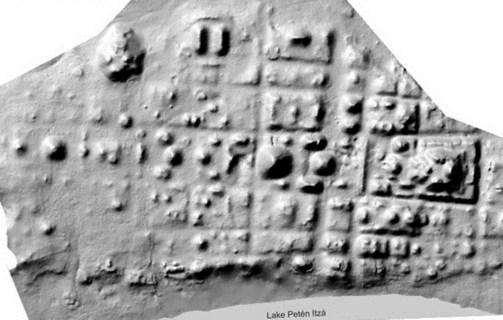Ancient Digger brings you the latest archaeology news and headlines everyday of the week!
Stone Age axemen used "complicated thinking", say archaeologists using brain scanning
The craftspeople who made Stone Age hand axes would have required far greater skill than their predecessors needed to create the oldest known tools, according to archaeologists who have concluded that prehistoric practitioners were more than “ape-men banging rocks together”.
 |
| The Happisburgh Hand Axe © Norfolk Museums and Archaeology Service |
Recreating Lower Palaeolithic tools by teaching a group to strike stones, researchers examined brain activity during knapping, which was once carried out by skilled prehistoric people using pieces of bone, antler or stone.
Magnetic Resonance Imaging showed that the process is “complicated” and “nuanced”, says Dietrich Stout, the experimental archaeologist who led the project
Belgian archaeologists discover 4,400-year-old statue of Egyptian pharaoh
A team of Belgian archaeologists unearthed a rare statue dating back over 4,400 years, Egyptian news site Mada Masr reported Tuesday. The statue of Pharaoh Sahure who was the ruler of the ancient Egyptian Kingdom's Fifth Dynasty, was found in the southern Egyptian governorate of Aswan and dates back to between 2487-2475 BC.
Archaeologists Dig Deep At George Washington’s Boyhood Home
When many people think of Washington’s home, they think of Mt. Vernon in Alexandria. But that’s only where he lived lived later in life. Our nation’s first president spent most of his childhood at Ferry Farm in Fredericksburg, Virginia.
Archaeologists Find Ancient Maya City With a Modern Grid Layout
 |
| Timothy Pugh / Queens College |
Guatemala.
It was in use between roughly 600 B.C. and 300 B.C., a time when the first cities were being constructed in the area. No other city from the Maya world was planned using this grid design, researchers say.
Archaeologists find ancient skeleton of a man buried with a shield in England
Archaeologists have unearthed the ancient remains of a man buried with a shield in England, which is characteristic of an Iron Age burial belonging to the Arras culture, a civilization that existed in what is now Yorkshire and is known for its impressive burials and grave goods.
Archaeologists Use Digital Technology to Excavate Famous Burial Pit Guarded by Terracotta Warriors
Chinese archaeologists excavating the legendary burial pit of the country's first emperor in the ancient capital of Xi'an are using a digital scanning device to examine the mausoleum where thousands of terracotta warriors stand guard.
Archaeologists Reconstruct Jamestown Church Where Pocahontas Got Married
Instead of digging up remains, archaeologists in Jamestown, Virginia are working on a reconstruction project in bringing back the church believed to be the place where Pocahontas got married. Five years ago, the discovery of Jamestown colony footprint was discovered, and now archaeologists are rebuilding the structure that witnessed the wedding of John Rolfe, a tobacco planter, and Pocahontas, daughter of a Native American chief, in 1614.
Archaeologists Excavate Waterloo Battlefield
Soldiers recovering from post-traumatic stress disorder have joined a ground-breaking archaeological project at the site of the Battle of Waterloo. British Army veterans and serving soldiers, some wounded in recent campaigns, are working alongside archaeologists to unearth the history of the Battle of Waterloo 200 years on.
Old Kingdom Statue Base Unearthed in Upper Egypt
 |
| Met Museum |
The statue base was carved from fine-grained sandstone. The complete statue would have depicted King Sahure seated on a throne. There are only two known statues of King Sahure—one of them is at the Metropolitan Museum in New York, and the other is at the Egyptian Museum in Tahrir. For another recent Egyptological discovery, see "18th-Dynasty Tomb Discovered in Luxor."







0 Comments:
Post a Comment
We appreciate comments, but we delete SPAM.